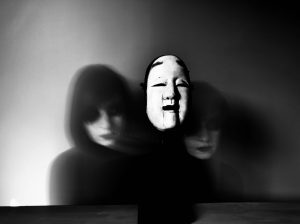What is psychoanalysis, and why would movies go there? Psychoanalysis is a form of talking therapy and a framework for ideas. It is composed of three interrelated strands: metapsychology, which is a body of theoretical hypotheses about the nature and structure of the mind, a model of psychological development, and a collection of psychotherapy techniques like dream analysis and free association. Psychoanalysis has also been an inspiration for some of the most famous and thought-provoking films ever made, from the subtle psychological exploration of Bergman's films to the dark, twisted minds of Hitchcock's characters.
Hitchcock, The Master of Suspense
 Known for his suspenseful films, Alfred Hitchcock is widely regarded as one of the greatest directors of all time. Perhaps the most well-known aspect of his art is how he incorporated psychoanalytic themes into his pieces. His films, which are renowned for their complex narratives, tense moments, and psychological nuance, have had a profound effect on the film industry.
Known for his suspenseful films, Alfred Hitchcock is widely regarded as one of the greatest directors of all time. Perhaps the most well-known aspect of his art is how he incorporated psychoanalytic themes into his pieces. His films, which are renowned for their complex narratives, tense moments, and psychological nuance, have had a profound effect on the film industry.
The psychological depth, intricate storyline, and innovative filmmaking techniques of these Hitchcock films continue to captivate audiences.
1958's "Vertigo" is regarded as one of Hitchcock's best films and a masterwork of psychological suspense. The main character of the movie is Scottie Ferguson, a former detective with acrophobia, or a fear of heights. His job is to follow Madeleine Elster, a mysterious woman who seems to be close to taking her own life. As Scottie becomes increasingly obsessed with Madeleine, she tragically dies in a fall. Many years later, Scottie meets Judy Barton, a woman who remarkably resembles Madeleine. He becomes convinced that Judy is Madeleine reincarnated and sets out to recreate their past relationship, leading to a dangerous obsession that threatens his sanity.
Scottie's obsession with possessing and controlling Madeleine is explored in the film, along with the destructive power of obsession. Additionally, as Scottie's understanding of what is happening becomes more warped, vertigo makes it harder to distinguish between reality and illusion. Hitchcock also skilfully manipulates the audience's perception of events by using suggestion to great effect, which adds to the tension and unease. Not to mention, the film's cinematography is amazing, especially when it comes to the use of vertigo sequences, and Bernard Herrmann's eerie score greatly adds to the mood and impact of the picture.
Some consider Psycho, which came out in 1960, to be a suspense masterwork. This horror movie is a ground-breaking piece of art that revolutionised the genre. It demonstrated how horror can encompass so much more than just shock and graphic violence. Its exploration of intricate psychological themes, an iconic shower scene, and novel narrative techniques have cemented its place in cinematic history. The movie centres on Marion Crane, a secretary who steals money from her company. Fleeing at a remote motel, she encounters the enigmatic Norman Bates, the motel's proprietor. As Marion's stay progresses, she becomes increasingly unsettled by Norman's strange behaviour and the eerie atmosphere of the motel. A startling turn of events exposes Norman's actual nature, setting up a terrifying conclusion. To keep viewers on the edge of their seats, Hitchcock expertly combines suspenseful storytelling and shock tactics. A classic illustration of this is the scene in the shower, which blends sudden violence with a voyeuristic viewpoint. Along with examining themes of madness, obsession, and guilt, Psycho also explores the intricacies of the human psyche. These psychological depths are vividly and unsettlingly portrayed by the character of Norman Bates. The movie also has an unusual narrative structure because it gradually reveals important information and switches perspectives. This keeps the audience wondering and evokes a sense of unease. Finally, the use of shadows and cramped areas in the film's cinematography adds to the eerie atmosphere. The famous soundtrack by Bernard Herrmann heightens the suspense and tension even more.
 Bergman, The Explorer of the Soul
Bergman, The Explorer of the Soul
The films of Swedish filmmaker and screenwriter Ingmar Bergman are well known for their examination of existential themes, religious issues, and human psychology. The intricacies of relationships, mortality, and the pursuit of meaning in life are commonly explored in his films. Directors like Woody Allen, David Lynch, and Lars von Trier have all been greatly influenced by Bergman's work.
Among the most influential films of the 20th century, according to some, is The Seventh Seal (1957). The story follows a knight, portrayed by Max von Sydow, who is a disillusioned soldier returning from the Crusades. It is a gloomy, allegorical tale set during the Black Death. He encounters Death (played by Bengt Ekerot) and challenges him to a game of chess, hoping to delay his own death. The knight wonders about the purpose of life and the existence of God as he plays because he sees the misery and despair of those around him.
In a world destroyed by the plague, the film examines the meaning of life, death, and the search for purpose. The mediaeval world in which it is set offers a striking and significant context for the existential issues it poses. The image of Death and the knight playing chess represents humanity's struggle against death and the unknown. It delves into religious themes such as God's nature, faith, and doubt. The movie's sombre and eerie atmosphere is further enhanced by the black and white cinematography.
The 1966 film Persona is another one of Ingmar Bergman's writing and directing credits. The film features Bibi Andersson and Liv Ullmann in a narrative about Alma, a nurse, taking care of Elisabet, a stage actress who has lost her voice. Identity, duality, and the relationship between the self and the other are among the themes that are explored in the movie. Stage actress Elisabet abruptly loses her voice during a performance, setting the scene for the movie. She is taken to a secluded island cottage for recovery, where she is attended to by a young nurse named Alma. As the two women spend time together, they begin to develop a strange and intimate relationship, blurring the lines between reality and illusion.
Numerous themes are covered in the movie, such as identity, duality, the nature of reality, and the self-other relationship. Different facets of the human psyche are represented by the characters Alma and Elisabet, who are thought to be reflections of one another. Numerous symbols can be found throughout the movie, including Elisabet's masks and the double image that keeps appearing. The themes of identity and the disintegration of the self are explored through the use of these symbols. Additionally, it has been interpreted as a Freudian exploration of the unconscious mind. It is believed that the filmmaker's own psyche is projected into the roles of Elisabet and Alma.
Some additional insights about Persona
- The movie's surreal and mysterious atmosphere was enhanced by the black and white photography.
- The film is often mentioned as a precursor to postmodern cinema.
- It has been seen in many different contexts, such as a feminist film, a film about the nature of art, or a film concerning the perils of delusion.
 Other Notable Films Seemingly Influenced by Psychoanalysis
Other Notable Films Seemingly Influenced by Psychoanalysis
- The Shining (1988), The Stephen King's novel adapted by Stanley Kubrick. It is a terrifying look at loneliness, insanity, and the power of the mind.
- David Fincher's darkly comedic film Fight Club (1999) delves into themes of consumerism, masculinity, and the search for purpose in life.
- The psychological thriller Black Swan (2010) by Darren Aronofsky delves into themes of obsession, perfectionism, and the shadowy side of the creative process.
